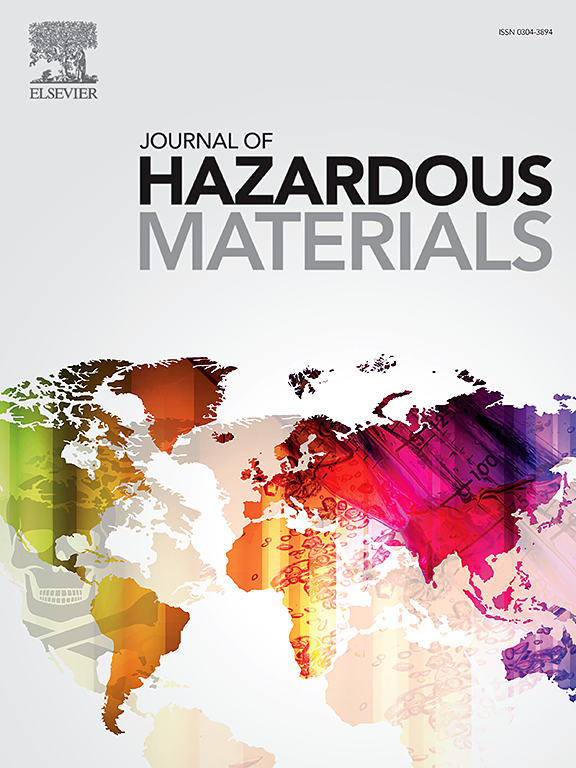健康老年人尿多环芳烃与糖代谢标志物的关系及其潜在机制:中国BAPE研究
IF 12.2
1区 环境科学与生态学
Q1 ENGINEERING, ENVIRONMENTAL
引用次数: 0
摘要
多环芳烃(PAHs)越来越多地与代谢紊乱,包括2型糖尿病有关,但它们对老年人糖代谢的影响尚不清楚。本研究调查了健康老年人尿中多环芳烃代谢产物与糖代谢标志物之间的关系,并探讨了潜在的潜在机制。在中国BAPE研究中,招募了70名健康的老年参与者,并在2018年9月至2019年1月期间进行了5次每月随访,本研究检查了6种尿PAH代谢物与5种糖代谢标志物之间的关系。我们发现尿中多环芳烃代谢物暴露与糖代谢标志物升高显著相关,混合多环芳烃暴露也观察到这种影响。尿液代谢组学结合途径富集分析显示,多环烃暴露诱导代谢扰动涉及氧化应激、溶质载体信号传导和其他糖尿病相关途径。这些发现与不良结果通路(AOP)框架一致,其中潜在的分子启动事件(MIEs)如活性氧(ROS)的产生触发信号转导中的下游关键事件(KEs),最终影响糖代谢功能。这些发现提供了将多环芳烃暴露与糖代谢失调联系起来的机制证据,并强调了环境污染物监测对支持老年人代谢健康的重要性。然而,相对较小的样本量和测量的多环芳烃化合物的有限覆盖范围可能限制了研究结果的普遍性和全面性,这应该在更大和更多样化的队列中进行验证。本文章由计算机程序翻译,如有差异,请以英文原文为准。

Associations Between Urinary Polycyclic Aromatic Hydrocarbons and Glycometabolic Markers and Potential Mechanisms in Healthy Older Adults: The China BAPE study
Polycyclic aromatic hydrocarbons (PAHs) have been increasingly implicated in metabolic disorders, including type 2 diabetes, yet their impact on glycometabolism in older adults remains unclear. This study investigated associations between urinary PAH metabolites and glycometabolic markers and explored underlying potential mechanisms among healthy older adults. In the China BAPE study, 70 healthy older participants were recruited and five monthly follow-up visits were conducted between September 2018 and January 2019, with the associations between six urinary PAH metabolites and five glycometabolic markers were examined in this study. We found that exposure to urinary PAH metabolites was significantly linked to elevated glycometabolic markers, and such effects were also observed for mixed PAH exposures. Urine metabolomics combined with pathway enrichment analysis revealed that PAH exposures induced metabolic perturbations involving oxidative stress, solute carrier signaling, and other diabetes-related pathways. These findings aligned with the Adverse Outcome Pathway (AOP) framework, in which potential molecular initiating events (MIEs) such as reactive oxygen species (ROS) production triggered downstream key events (KEs) in signal transduction, ultimately affecting glycometabolic function. These findings provide mechanistic evidence linking PAH exposure to glycometabolic dysregulation and underscore the importance of environmental pollutant monitoring in older adults to support metabolic health. However, the relatively small sample size and the limited coverage of measured PAH compounds may limit the generalizability and comprehensiveness of the findings, which should be validated in larger and more diverse cohorts.
求助全文
通过发布文献求助,成功后即可免费获取论文全文。
去求助
来源期刊

Journal of Hazardous Materials
工程技术-工程:环境
CiteScore
25.40
自引率
5.90%
发文量
3059
审稿时长
58 days
期刊介绍:
The Journal of Hazardous Materials serves as a global platform for promoting cutting-edge research in the field of Environmental Science and Engineering. Our publication features a wide range of articles, including full-length research papers, review articles, and perspectives, with the aim of enhancing our understanding of the dangers and risks associated with various materials concerning public health and the environment. It is important to note that the term "environmental contaminants" refers specifically to substances that pose hazardous effects through contamination, while excluding those that do not have such impacts on the environment or human health. Moreover, we emphasize the distinction between wastes and hazardous materials in order to provide further clarity on the scope of the journal. We have a keen interest in exploring specific compounds and microbial agents that have adverse effects on the environment.
 求助内容:
求助内容: 应助结果提醒方式:
应助结果提醒方式:


